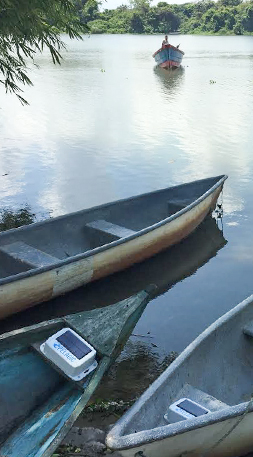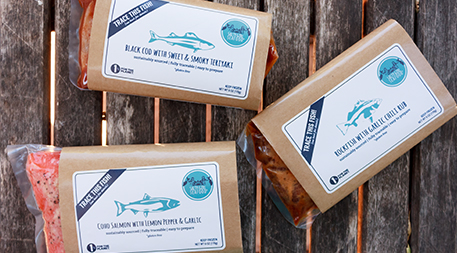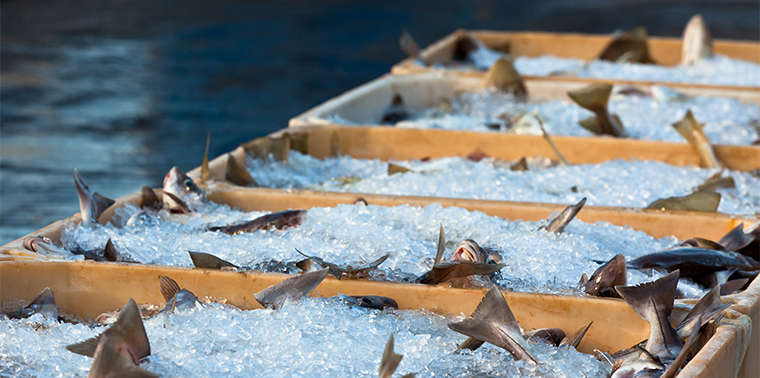February 24, 2016 — This article originally appeared under the headline “Tracking Fish from Hook to Fork” at Hakai Magazine, an online publication about science and society in coastal ecosystems. Read more stories like this at hakaimagazine.com.
A “fish tale” is a whopper — a story about the big one that got away. Now, consumers are increasingly asking for a different kind of fish tale: about the big ones that got netted or reeled in.
“People want the story of a fish. If you look at a menu and it says, ‘broiled rockfish,’ that conjures an image of a piece of fish on a plate. But if the menu says, ‘hook-and-line-caught Eastern Bay broiled rockfish,’ that starts building a story about that fish, about how and where it was caught,” says Steve Vilnit, marketing director at J.J. McDonnell, a Maryland-based fish wholesaler.
For a certain set of consumers, such “storied fish” are worth premium prices. Knowing a fish’s story is important not only to “foodies.” A fish will often go through five to 15 sets of hands in the supply chain, from the boat to the retailer or restaurant. A fish’s story can get muddled — sometimes accidentally, other times deliberately. High-value fish, such as salmon, are often replaced with low-value ones, duping consumers. Some unscrupulous fishers pretend restricted or protected fish are of another species, bypassing international regulations and conservation-focused quotas.
Driven by concerns about food safety and illegal fishing, major seafood companies are working to improve how they trace fish through the industry’s complex supply chains.

In an effort to level the playing field between large commercial fishing fleets and small-scale fishers, Pelagic Data Systems created a low-cost, solar-powered monitoring system that can prove where a boat was fishing and potentially lead to sustainability certification. Photo courtesy of Pelagic Data Systems
But in many parts of the world, fish are caught by artisanal fishers, not by massive trawlers. For these small-scale fishers, existing tracing technologies are often too cumbersome, complex or expensive to use. This means they are often ineligible for sustainability certification (and the economic benefits that entails), because they can’t prove where, when and how their fish were taken.
To close this gap, a number of technologies and business strategies are coming online that will make it easier for artisanal fleets, companies, governments and even individuals to track a fish from sea to fork.
California-based Pelagic Data Systems, for example, has developed a low-cost, sturdy, solar-powered device that can be installed on a small boat. Like the more expensive vehicle monitoring systems used by large commercial fishing vessels, it sports sensors that collect data on the boat’s location in the water. The device automatically uploads the data to the cloud over a cellular network, allowing seafood buyers, regulators and conservation groups to track the boat’s location and fishing practices by following the data.
In Mexico, a fishery recently proved that it could use the ultralight device to monitor ships in a region where illegal fishing had once been common, according to Melissa Garren, Pelagic Data Systems’ chief scientific officer. This proof of monitoring capability helped the fishery receive fair trade certification.
Another company, TRU-ID, is trying to solve the problem of mislabeled fish.
As much as a third of fish sold in U.S. markets is labeled as the wrong species. To help protect their reputations in the face of such rampant fraud, some seafood suppliers are sending samples of fish tissue to independent DNA testing facilities to provide species authentication. But this testing is expensive and can take days to return results. TRU-ID is developing portable kits that suppliers could soon use in their own facilities, providing DNA species verification in real time.
“The kits allow upping the volume of testing to provide more assurance, while bringing the price of testing down,” says Bob Hanner, the company’s chief technology officer. TRU-ID so far has kits for identifying Chesapeake blue crab as well as Atlantic, sockeye, coho and chinook salmon.
Certified sustainable fish, like certified organic produce, can command higher prices at the market. But between dealers, wholesalers and the other businesses along the chain, these increased profits can be split so many ways that it often leaves little for the fishers themselves, who must carry the burden of added equipment and demands.

California-based Salty Girl Seafood says it makes “traceability the story” with labels that inform consumers where, how and by whom the seafood was caught. Photo courtesy of Salty Girl Seafood, Inc.
“One of the biggest challenges is to create a financial incentive that goes all the way down to the fishermen,” says Steven Gaines, a marine ecologist at the University of California, Santa Barbara. “We want those incentives to [reach] fishermen so they will act in a different way that leads to sustainability.”
To receive greater benefits, some fishers are becoming more fully involved in the tracing process.
The Gulf Wild initiative is a collaboration among professional fishers and conservationists in the Gulf of Mexico. At sea, boat personnel attach a tag to each harvested fish with an identification number and a barcode. When consumers or chefs visit the Gulf Wild website, they can use the tag information to trace the fish through the chain of custody. Gulf Wild fishers, in turn, voluntarily agree to a set of harvesting rules that extend beyond government requirements. The program is designed to build trust in Gulf seafood and enhance its marketability.
California-based Salty Girl Seafood is taking a different approach: by consolidating the supply chain under one name, there’s more money left over for fishers. Salty Girl purchases whole fish directly from West Coast fisheries, processes them and then distributes individually packaged frozen filets to California retail stores and directly to consumers online. The Salty Girl package labels inform consumers where and how the seafood was caught and by whom. “The consumer knows where the fish come from, and that’s the core component of our business,” says Norah Eddy, a co-founder of Salty Girl. “We make traceability the story.”
![]()
Ensia shares solutions-focused stories free of charge through our online magazine and partner media. That means audiences around the world have ready access to stories that can — and do — help them shape a better future. If you value our work, please show your support today.
Yes, I'll support Ensia!
